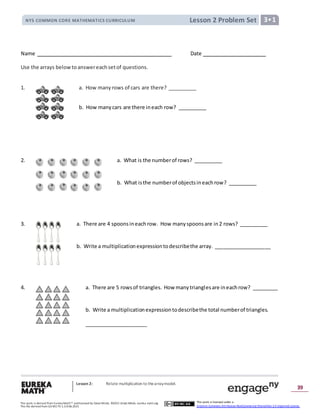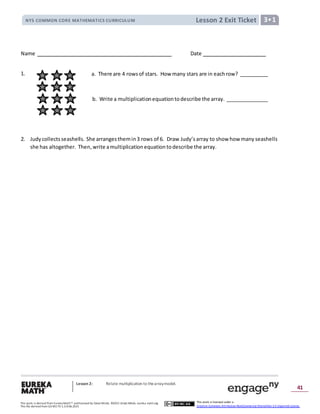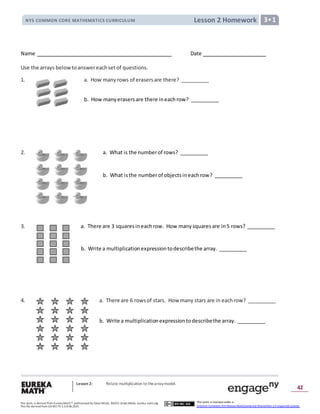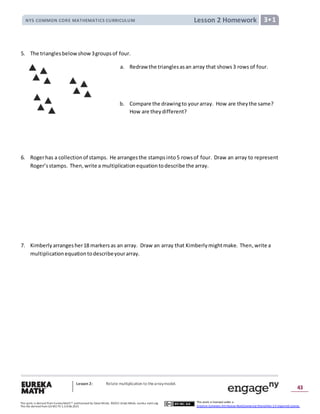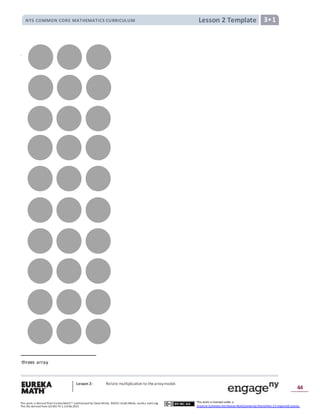This document provides the lesson plan and materials for Lesson 2, which aims to relate multiplication to the array model. The lesson includes fluency practice with addition and subtraction, an application problem using repeated addition, and a concept development section where students relate equal groups to arrays. Students redraw scattered equal groups as organized arrays and write multiplication expressions and equations to describe the arrays. The lesson concludes with a problem set and student debrief to assess understanding of relating multiplication to the array model.
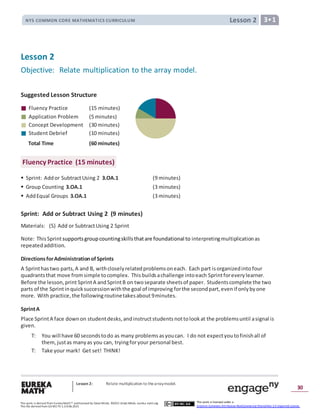

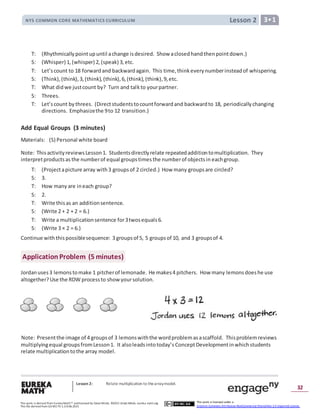

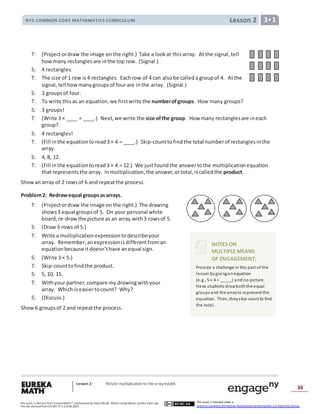
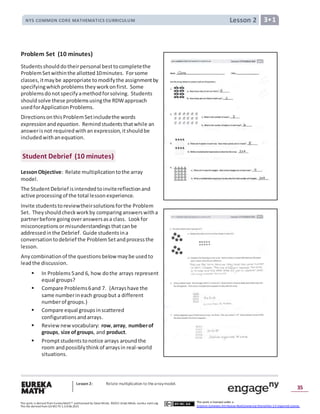

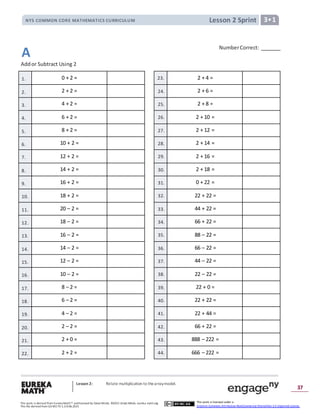
![Lesson 2 SprintNYS COMMON CORE MATHEMATICS CURRICULUM 3•1
Lesson 2: Relate multiplication to thearraymodel.
38
This work is derived from Eureka Math™ andlicensed by Great Minds. ©2015-Great Minds. eureka math.org
This file derived from G3-M1-TE-1.3.0-06.2015
This work is licensed under a
Creative Commons Attribution-NonCommercial-ShareAlike 3.0 Unported License.
Addor Subtract Using 2
1. 2 + 0 = 23. 4 + 2 =
2. 2 + 2 = 24. 6 + 2 =
3. 2 + 4 = 25. 8 + 2 =
4. 2 + 6 = 26. 10 + 2 =
5. 2 + 8 = 27. 12 + 2 =
6. 2 + 10 = 28. 14 + 2 =
7. 2 + 12 = 29. 16 + 2 =
8. 2 + 14 = 30. 18 + 2 =
9. 2 + 16 = 31. 0 + 22 =
10. 2 + 18 = 32. 22 + 22 =
11. 20 − 2 = 33. 22 + 44 =
12. 18 − 2 = 34. 66 + 22 =
13. 16 − 2 = 35. 88 − 22 =
14. 14 − 2 = 36. 66 − 22 =
15. 12 − 2 = 37. 44 − 22 =
16. 10 − 2 = 38. 22 − 22 =
17. 8 − 2 = 39. 22 + 0 =
18. 6 − 2 = 40. 22 + 22 =
19. 4 − 2 = 41. 22 + 44 =
20. 2 − 2 = 42. 66 + 22 =
21. 0 + 2 = 43. 666 − 222 =
22. 2 + 2 = 44. 888 − 222 =
B
[KEY]
NumberCorrect: _______
Improvement: _______](https://image.slidesharecdn.com/math-g3-m1-topic-a-lesson-2-180426143731/85/Math-g3-m1-topic-a-lesson-2-9-320.jpg)
